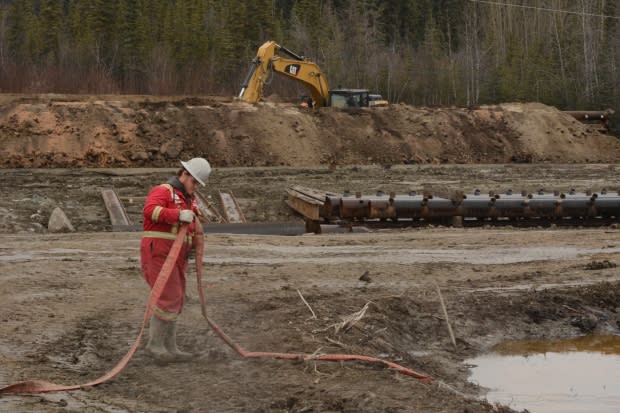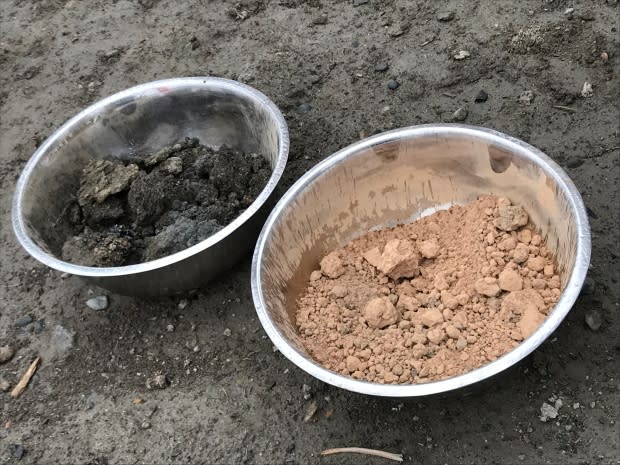Whitehorse's infamous tar pit gets cleaned up after 73 years
Workers are busy at Whitehorse's Marwell tar pit, cleaning up a 73-year-old mess.
Project manager Paul Inglis says the companies working on site and the territorial government are trying to assuage people's fears about emissions and contamination as they clean up the sludge.
The tar pit dates back decades, to the construction of the Alaska Highway. An oil refinery closed in 1945 and some waste tar was soon after put into a clay pit.
Over the years the site "became an unofficial dumping ground. We've found a lot of tires that people dumped in here, that kind of thing," says Inglis.

1958 death prompts call for removal
The tar pits are infamous as someone died there in 1958.
According to a historical research project commissioned by the City of Whitehorse and the Yukon government, a man walking through the pit became "trapped in the semi-liquid tars present and died of exposure."
The report says the coroner at the time "strongly recommended that the oil pool, which has proven to be a hazard to life, be removed by whatever means necessary as soon as possible.‟
Federal and territorial funding for the project was finalized in 2010. The cleanup is funded 70 per cent federally and 30 per cent by the territorial government with a projected budget of $6.8 million.
The site is in the industrial section of Whitehorse and is owned by the Yukon government.
"The levels of contamination are high enough that there's obligation to clean it up," said Inglis.
A B.C. company called Milestone Environmental Contracting is working with an Alberta company called Iron Creek Group Inc. on the remediation work after years of study.
The site, once restored, could be used for commercial or industrial use.

Vapor rises over Whitehorse
Inglis says the cleanup process uses a technique called thermal conduction.
Contaminated soil is heated in a closed space which is hot as an oven. Vapours from the contamination are captured and a closed system without being released into the air.
It's a system that works a bit like a water pipe for filtration.
"The heat turns any contaminants into a gas. And then it's collected and pumped into a container, and that burns off all the contaminants that are burned into gas. The exhaust goes through a tank of water and that water pulls out anything that didn't get burned," he said.
Contaminated material will be shipped off-site for disposal.
Inglis says some people have been calling Environment Yukon with concerns about contamination.
However he says the vapour rising the site is safe.
"It's almost entirely steam," he said. "The air emissions are not a concern. They're far below any level for occupational health and safety standards.".
Even workers on site are not required to wear masks.

Years of work ahead
About six workers are on site every day now. The work should continue until 2020, including throughout the winter.
After that, Inglis said the site will be monitored for "at least three years to make sure that nothing is moving off-site."


